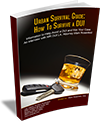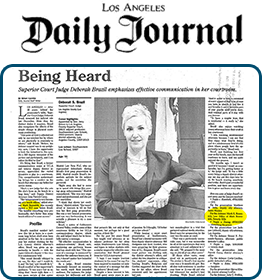It Is the Basic Requirement for Title 17 That the Integrity of the Sample Is Maintained
Mark Rosenfeld: Title 17 requires that the integrity of the sample be maintained?
Expert: Yes.
Mark Rosenfeld: And was that done in this case?
Expert: In my opinion, yes.
Mark Rosenfeld: Another expert may have a different opinion?
Expert: Well, we need to get into specifics in regard to integrity, but I imagine so, yes.
Mark Rosenfeld: Okay. Alright, is it fair to characterize the peak at 0.736 and the peak at 1.078 as something that should not be there?
Expert: No.
Mark Rosenfeld: Okay. You don’t know what it is?
Expert: I don’t know what those peaks are; I notice those peaks are consistent with the regular analysis by this method. They may, they are other volatile compounds and they may be volatile compounds that are present in normal blood specimens. I just can’t identify them.
Analysis of Blood Chromatography Is an Extremely Complicated Science
Mark Rosenfeld: Is it science, it is scientifically reasonable that those other peaks would be evidence of fermentation?
Expert: If uh, if they are, they are not fermentations of ethanol and uh, it’s not reasonable to suggest that should be the first inclination of they are simply other volatile compounds that come out in this process.
Mark Rosenfeld: Can they be from fermentation?
Expert: In my opinion, no. I see them too consistently in this method, and now it suggests that there is fermentation taking place in all of the blood specimen tubes that we have ever analyzed and I have a hard time believing that that’s the case.
Mark Rosenfeld: Can you prove that it’s not?
Expert: Not with this method, I cannot prove that. I’d have to identify those particular compounds to make an absolute judgment.
Occasionally There May Be Factors in a Test Report That May Even Confound Experts
Mark Rosenfeld: So there’s something that the machine is reading in subjects’ blood samples, you don’t know what it is, you don’t know where it came from?
Expert: Well, I suspect that it came from the blood specimen, but you’re correct, I don’t know what it is.
Mark Rosenfeld: And when you run your quality controls and your blanks, it’s not there?
Expert: That is correct.
Mark Rosenfeld: And the tick mark that separates the first peak from the second peak is a tick mark that the computer generated?
Expert: Yes, that is correct, uh, that represents the separation between the two compounds.
Mark Rosenfeld: And what is that tick mark based on, how is that generated?
Expert: The computer uh, scans the uh, value of the FID detector, it’s looking for a rising slope and a descending slope. When it sees a juncture where there is a descending slope and another ascending slope, it calls that a separation. So whatever area counts, it makes for the peak at 0.736 minutes, those are separate counts from the peak at 0.849 minutes, which is the ethanol peak.
Mark Rosenfeld: So when the gas chromatograph computer analyzes the area under the ethanol peak, it goes from tick mark to tick mark?
Expert: Yes, that’s correct.






 Personal Attention
Personal Attention Every criminal case is unique and no attorney can guarantee the outcome of a case. The information on this site is legal advertising and for general information only. Using this site, requesting books, information, consultations or communicating with Attorney Rosenfeld through its site does not form an attorney/client relationship.
Every criminal case is unique and no attorney can guarantee the outcome of a case. The information on this site is legal advertising and for general information only. Using this site, requesting books, information, consultations or communicating with Attorney Rosenfeld through its site does not form an attorney/client relationship.








